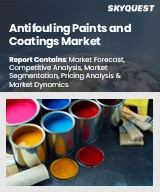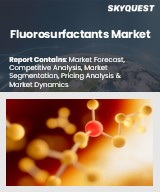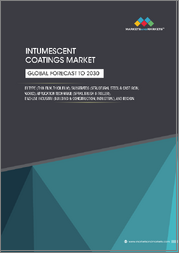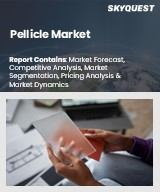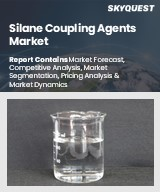
|
시장보고서
상품코드
1806609
요트 코팅 시장 : 코팅 유형, 수지 유형, 기술, 선박 유형, 최종사용자, 적용 방법, 유통 채널별 - 세계 전망(2025-2030년)Yacht Coatings Market by Coating Type, Resin Type, Technology, Vessel Type, End User, Application Method, Distribution Channel - Global Forecast 2025-2030 |
||||||
요트 코팅 시장은 2024년에 42억 7,000만 달러로 평가되었습니다. 2025년에는 44억 8,000만 달러에 이르고, CAGR 5.16%로 성장하여 2030년에는 57억 8,000만 달러에 달할 전망입니다.
| 주요 시장 통계 | |
|---|---|
| 기준 연도 : 2024년 | 42억 7,000만 달러 |
| 추정 연도 : 2025년 | 44억 8,000만 달러 |
| 예측 연도 : 2030년 | 57억 8,000만 달러 |
| CAGR(%) | 5.16% |
요트 코팅은 예술과 과학의 융합이며, 해양공학과 첨단 화학을 융합하여 부식, 생물 부착, 외해의 가혹한 힘으로부터 선박을 보호하기 위해 해양 공학과 첨단 화학을 융합합니다. 요트 소유주들이 혹독한 바닷물 환경에 견딜 뿐만 아니라 완벽한 마감 품질을 유지하는 표면을 요구함에 따라, 도료 조제업체들은 가속화된 기술 혁신을 추진해야 하는 과제를 안고 있습니다. 하이브리드 수지 시스템, 차세대 오염 방지 살생물제, 친환경 대체 용매의 도입은 성능과 환경 보호라는 두 마리 토끼를 모두 잡기 위한 업계의 노력을 잘 보여주고 있습니다.
또한, 시장의 진화는 국제적인 규제 강화에 의해 형성되고 있으며, 제조업체는 엄격한 VOC 규제와 살생물제 사용 제한을 충족시키기 위해 제품을 재제조해야 합니다. 이러한 규제 상황은 화학물질 공급업체와 해양 건축가의 협업을 촉진하고, 요트 제작자 및 소유자의 큰 기대와 컴플라이언스의 균형을 맞추는 솔루션을 공동 개발하고 있습니다. 이러한 협력적 노력은 생태계에 미치는 영향을 최소화하면서 유지보수 주기를 연장할 수 있는 다기능 코팅의 출현을 촉진했습니다.
이 요약에서는 이러한 기본 역학에서 벗어나 시장 궤도에 영향을 미치는 가장 중요한 변화, 최근 관세 도입의 영향, 실용적인 세분화 고찰, 지역 역학, 경쟁 정보, 전략적 제안을 살펴봅니다. 각 섹션은 이해관계자들이 요트용 코팅 생태계의 현재 과제와 미래 기회에 대해 명확하게 이해할 수 있도록 설계되었습니다.
기술 혁신, 지속 가능한 혁신, 규제 진화를 통해 요트용 코팅을 형성하는 파괴적인 힘을 밝힙니다.
기술적 혁신은 요트용 코팅의 전망을 재정의하고, 자기복원성 폴리머와 나노기술을 이용한 표면 개질제를 결합한 솔루션의 도래를 예고하고 있습니다. 이러한 기술 혁신은 보호층의 수명을 연장할 뿐만 아니라 미관 개선 및 유지보수의 용이성을 실현합니다. 또한, 디지털 검사 도구의 통합으로 실시간 성능 모니터링이 가능해져 소극적인 유지보수 스케줄을 예측 가능한 유지보수 체제로 전환하여 다운타임을 줄이고 도크 간격을 연장할 수 있습니다.
요트 코팅 공급망, 비용 및 경쟁 전략에 대한 2025년 미국 관세가 미치는 영향 평가
2025년 미국의 관세 개정은 요트용 코팅의 가치사슬에 새로운 복잡성을 가져왔습니다. 주요 화학 제조 거점으로부터 수입되는 원자재에 대한 관세 인상으로 인해 수지 제조업체와 안료 공급업체들의 투입비용이 상승할 것으로 예측됩니다. 이에 대응하기 위해 선진 기업들은 중요한 공급원을 현지화하려는 노력을 가속화하고, 국내 수지 제조업체와 파트너십을 맺어 미국 시장에서의 생산 능력 확대를 추진하고 있습니다.
요트용 코팅 시장 세분화: 코팅 유형, 수지 유형, 응용 기술, 선박 프로파일, 유통 채널에 따른 코팅 유형, 수지 변형, 응용 기술, 선박 프로파일, 유통 채널에 따른 시장 세분화
부문 분석에 따르면, 방청 코팅은 선체의 무결성을 위해 필수적이며, 방오 제품은 경질 방오와 자기 연마 공중합체 용액으로 나뉘며, 해양 성장 방지에 필수적입니다. 프라이머와 언더코트는 필수적인 접착층을 제공하고, 탑사이드 코팅은 요트의 시각적 매력을 정의하는 최종 장식 마감을 제공합니다. 이러한 코팅은 각기 다른 성능 요구 사항을 충족시키기 위해 고유한 화학 물질과 도포 프로토콜이 필요합니다.
수요와 혁신의 패턴을 반영하는 미주, 중동 및 아프리카, 아시아태평양의 요트 코팅 시장의 지역적 역학 탐구
북미와 남미의 지역적 역학은 미국 동부 해안과 플로리다에 고급 요트 제작사가 집중되어 있고, 성숙한 서비스 인프라가 광범위한 애프터마켓 활동을 뒷받침하고 있는 것에 크게 영향을 받고 있습니다. 브라질과 멕시코의 과도기적 성장 통로는 가처분 소득 증가와 레저 및 해양 커뮤니티의 확대로 인해 코팅 도포 시설에 대한 투자를 유치하고 있습니다.
세계 주요 요트 코팅제 제조업체 및 공급업체의 전략적 노력, 경쟁 포지셔닝, 협력 관계의 주요 하이라이트
주요 요트용 도료 제조업체들은 특히 VOC 함량이 낮은 환경 인증 제품, 고도의 오염 제어 기술 등 타겟화된 연구개발 투자를 통해 차별화를 꾀하고 있습니다. 해양 엔지니어링 회사와의 공동 혁신 계약을 통해 선체 설계 및 유지보수 계획 소프트웨어와 직접 통합되는 솔루션을 공동 개발할 수 있게 되었습니다. 이러한 디지털과 화학 전문 지식의 융합은 공급업체의 가치 제안을 재정의하고 있습니다.
혁신, 규제 변화, 신흥 시장 기회를 활용하기 위해 업계 이해관계자들에게 타겟팅된 전략적 로드맵을 제공합니다.
업계 리더는 업계 최고의 성능을 발휘하면서 진화하는 규제 프레임워크에 따라 지속 가능한 수지 기술 개발을 우선순위에 두어야 합니다. 기업들은 사내 파일럿 시설에 투자하고 재료 과학 연구소와 협력함으로써 환경 영향을 줄이는 획기적인 화학 물질 시장 출시 시간을 단축할 수 있습니다.
정성적 평가, 1차 조사와 2차 조사를 결합한 엄격한 조사 방법을 통해 요트용 코팅에 대한 종합적인 분석을 실시합니다.
본 분석은 1차 조사와 2차 조사를 통합한 엄격한 조사 방법론의 틀을 활용하여 확실한 통찰력을 얻었습니다. 핵심 데이터는 업계 임원, R&D 관리자, 해양 설계자와의 심층 인터뷰를 통해 수집한 자료로, 주요 제조 및 적용 시설 방문을 통해 보완되었습니다. 이러한 질적 참여는 배합 과제, 적용 모범 사례, 진화하는 성능 측정 기준에 대한 직접적인 관점을 제공했습니다.
요트용 코팅의 상황에서 기회, 과제, 전략적 중요성을 강조하는 중요한 발견과 미래 전망의 통합
종합적인 조사 결과는 성능 요구, 환경적 요구, 규제의 진화가 교차하는 시장을 강조하고 있습니다. 수지 화학 및 도포 기술의 기술 혁신이 차별화를 촉진하고, 지속가능성 트렌드와 관세 개발이 전략적 우선순위를 형성하고 있습니다. 지역 역학은 계속해서 크게 변화하고 있으며, 기성 조선 허브는 고성능 코팅에 집중하고, 신흥 시장은 서비스 확대와 공급망 최적화를 우선시하고 있습니다.
목차
제1장 서문
제2장 조사 방법
제3장 주요 요약
제4장 시장 개요
제5장 시장 역학
제6장 시장 인사이트
- Porter's Five Forces 분석
- PESTEL 분석
제7장 미국 관세의 누적 영향 2025
제8장 요트 코팅 시장 : 코팅 유형별
- 방청 코팅
- 방오
- 경질 방오 도료
- 자기 연마성 공중합체
- 프라이머 및 언더코트
- 톱사이드 코팅
제9장 요트 코팅 시장 : 수지 유형별
- 아크릴
- 에폭시
- 폴리우레탄
- 실리콘
- 비닐
제10장 요트 코팅 시장 : 기술별
- 분체 페인트
- 용제 기반
- 수성
제11장 요트 코팅 시장 : 선박 유형별
- 쌍동선
- 모터 요트
- 세일링 요트
- 슈퍼 요트
제12장 요트 코팅 시장 : 최종사용자별
- 애프터마켓
- Oem
제13장 요트 코팅 시장 : 적용 방법별
- 브러쉬
- 롤러
- 스프레이
- 에어 스프레이
- 에어리스 스프레이
제14장 요트 코팅 시장 : 유통 채널별
- 오프라인
- 온라인
제15장 아메리카의 요트 코팅 시장
- 미국
- 캐나다
- 멕시코
- 브라질
- 아르헨티나
제16장 유럽, 중동 및 아프리카의 요트 코팅 시장
- 영국
- 독일
- 프랑스
- 러시아
- 이탈리아
- 스페인
- 아랍에미리트
- 사우디아라비아
- 남아프리카공화국
- 덴마크
- 네덜란드
- 카타르
- 핀란드
- 스웨덴
- 나이지리아
- 이집트
- 튀르키예
- 이스라엘
- 노르웨이
- 폴란드
- 스위스
제17장 아시아태평양의 요트 코팅 시장
- 중국
- 인도
- 일본
- 호주
- 한국
- 인도네시아
- 태국
- 필리핀
- 말레이시아
- 싱가포르
- 베트남
- 대만
제18장 경쟁 구도
- 시장 점유율 분석, 2024
- FPNV 포지셔닝 매트릭스, 2024
- 경쟁 분석
- Akzo Nobel N.V.
- Mankiewicz Gebr. & Co.(GmbH & Co. KG)
- Axalta Coating Systems, LLC
- BASF SE
- Berger Paints Ltd.
- Boero Bartolomeo S.p.A
- Brunel Marine Coating Ltd
- Chemco International Ltd
- Chugoku Marine Paints Ltd.
- Cloverdale Paint Inc.
- Hempel A/S
- Jotun A/S
- Kansai Paint Marine Co.,Ltd.
- KCC Corporation
- Mankiewicz Gebr. & Co.
- Nippon Paint Marine Coatings Co. Ltd.
- NOROO R&C
- PPG Inc.
- RPM International Inc.
- Sherwin-Williams Company
- TIGER Coatings GmbH & Co. KG
- Nippon Paint Marine Coatings Co., Ltd.
제19장 리서치 AI
제20장 리서치 통계
제21장 리서치 컨택트
제22장 리서치 기사
제23장 부록
LSH 25.09.12The Yacht Coatings Market was valued at USD 4.27 billion in 2024 and is projected to grow to USD 4.48 billion in 2025, with a CAGR of 5.16%, reaching USD 5.78 billion by 2030.
| KEY MARKET STATISTICS | |
|---|---|
| Base Year [2024] | USD 4.27 billion |
| Estimated Year [2025] | USD 4.48 billion |
| Forecast Year [2030] | USD 5.78 billion |
| CAGR (%) | 5.16% |
Yacht coatings represent a convergence of art and science, blending advanced chemistry with marine engineering to protect vessels against corrosion, biofouling, and the relentless forces of the open sea. As yacht owners demand surfaces that not only endure harsh saltwater environments but also maintain impeccable finish quality, coating formulators are challenged to innovate at an accelerated pace. The introduction of hybrid resin systems, next-generation antifouling biocides, and eco-friendly solvent alternatives exemplifies the industry's commitment to achieving both performance and environmental stewardship.
Moreover, the market's evolution has been shaped by tightening international regulations, compelling manufacturers to reformulate products to meet stringent VOC restrictions and biocide usage limits. This regulatory landscape has spurred collaboration between chemical suppliers and marine architects to co-develop solutions that balance compliance with the high expectations of yacht builders and owners. These collaborative efforts have catalyzed the emergence of multifunctional coatings that offer extended maintenance intervals while minimizing ecological impact.
Transitioning from these foundational dynamics, this summary will examine the most significant shifts influencing market trajectories, the ramifications of recent tariff implementations, actionable segmentation insights, regional dynamics, competitive intelligence, and strategic recommendations. Each section is designed to equip stakeholders with a clear understanding of current imperatives and future opportunities within the yacht coatings ecosystem.
Unveiling Disruptive Forces Reshaping Yacht Coatings through Technological Breakthroughs, Sustainable Innovations, and Regulatory Evolution
Technological breakthroughs have redefined the yacht coatings landscape, ushering in solutions that combine self-healing polymers with nanotechnology-driven surface modifiers. These innovations not only extend the service life of protective layers but also deliver enhanced aesthetic appeal and ease of maintenance. Furthermore, the integration of digital inspection tools enables real-time performance monitoring, transforming reactive maintenance schedules into predictive maintenance regimes that reduce downtime and extend dry-dock intervals.
In parallel, sustainability trends have compelled stakeholders to explore water-based formulations, bio-sourced additives, and low-emission curing processes. As a result, eco-innovations have become a primary differentiator for coating suppliers, driving partnerships with environmental research institutes to validate product claims and secure green certifications. Regulatory evolution across major maritime jurisdictions has further accelerated the phase-out of high-VOC and organotin compounds, reinforcing the trajectory toward greener chemistries.
Finally, supply chain complexities have emerged as a critical area of focus, as the sourcing of key raw materials-such as specialty pigments, biocides, and high-performance resins-faces volatility. Consequently, companies are diversifying procurement strategies, enhancing supplier collaboration, and investing in on-site blending capabilities to mitigate risk. Together, these disruptive forces are reshaping both the competitive landscape and the criteria by which yacht coatings are evaluated.
Assessing the Far-Reaching Consequences of 2025 United States Tariffs on Yacht Coatings Supply Chains, Costs, and Competitive Strategies
The imposition of revised United States tariffs in 2025 has introduced a new layer of complexity for the yacht coatings value chain. Raw materials imported from key chemical manufacturing hubs are now subject to elevated duties, translating into higher input costs for resin producers and pigment suppliers. In response, forward-thinking companies have accelerated efforts to localize critical supply sources, forging partnerships with domestic resin manufacturers and incentivizing capacity expansions within the US market.
Moreover, coating formulators are revisiting product architectures to optimize the ratio of high-impact additives while retaining performance standards. This recalibration has included increased usage of domestic fillers and re-engineered curing agents, reducing dependency on tariff-exposed imports. Simultaneously, strategic pricing models have been adopted to absorb portions of the elevated costs, while maintaining competitive positioning in both aftermarket and OEM channels.
Ultimately, the short-term price pressures have catalyzed a broader strategic realignment, encouraging industry players to explore joint ventures, secure long-term offtake agreements, and invest in research partnerships aimed at developing next-generation chemistries that are inherently less reliant on tariff-sensitive inputs.
Deep Dive into Yacht Coatings Market Segmentation Illuminating Coating Types, Resin Variants, Application Technologies, Vessel Profiles, and Distribution Channels
Segmentation analysis reveals that anticorrosive coatings remain indispensable for hull integrity, while antifouling products-divided into hard antifouling and self-polishing copolymer solutions-are critical for marine growth prevention. Primers and undercoats provide essential adhesion layers, and topside coatings deliver the final decorative finish that defines a yacht's visual appeal. Each of these coating types demands tailored chemistries and application protocols to satisfy distinct performance requirements.
When we examine resin preferences, the spectrum spans acrylic, epoxy, polyurethane, silicone, and vinyl, each offering unique property profiles. Acrylic resins excel in UV resistance, epoxies lead in adhesion and chemical resistance, polyurethanes enhance gloss retention, silicones impart low surface energy, and vinyls provide cost-effective corrosion protection. These resin variants form the backbone of product differentiation and drive formulation innovation.
Technology-driven segmentation highlights powder coatings alongside solvent-based and water-based systems, with each platform offering trade-offs between environmental impact, application efficiency, and curing demands. Vessel type segmentation uncovers specific coating strategies for catamarans, motor yachts, sailing yachts, and superyachts, where differences in hull materials, usage patterns, and owner expectations guide product selection. End users in both aftermarket and OEM channels prioritize reliability and maintenance intervals, while application methodologies span brush and roller techniques to precision air spray and airless spray systems that deliver uniform coverage and minimize overspray. Distribution channels bridge traditional offline supply networks with emerging online procurement platforms, ensuring coating solutions are accessible to a global customer base.
Exploring Regional Dynamics in Yacht Coatings Markets across Americas, Europe Middle East & Africa, and Asia-Pacific Reflecting Demand and Innovation Patterns
Regional dynamics in the Americas are heavily influenced by the concentration of luxury yacht builders along the US East Coast and Florida, where a mature service infrastructure supports extensive aftermarket activities. Transitional growth corridors in Brazil and Mexico are attracting investment in coating application facilities, driven by rising disposable incomes and expanding leisure marine communities.
In Europe, Middle East & Africa, stringent environmental regulations in the EU and Gulf Cooperation Council states have elevated demand for low-emission formulations. Boatyards across the Mediterranean leverage advanced coating systems that comply with regional biocide restrictions, while a burgeoning high-net-worth segment in the Middle East fuels demand for bespoke finishes and rapid turnaround times.
Asia-Pacific presents a dual landscape: established shipyards in Japan and South Korea focus on high-performance coatings for superyachts, whereas emerging markets such as China, Thailand, and Indonesia are scaling production capabilities to support a growing domestic yachting culture. Across the region, strategic investments in local blending terminals are enhancing supply chain resilience and reducing lead times.
Highlighting Strategic Initiatives, Competitive Positioning, and Collaborations of Leading Global Yacht Coatings Manufacturers and Suppliers
Leading yacht coatings manufacturers are differentiating through targeted research and development investments, particularly in eco-certified products with low VOC content and advanced fouling control technologies. Collaborative innovation agreements with marine engineering firms are enabling co-developed solutions that integrate directly with hull design and maintenance planning software. This convergence of digital and chemical expertise is redefining supplier value propositions.
Strategic partnerships with global pigment producers have enabled tier one coating suppliers to access exclusive formulations that enhance UV stability and color retention. In parallel, selected players have expanded their service offerings to include on-site technical support, customized training programs, and performance analytics platforms, fostering deeper end-user engagement and driving brand loyalty.
Mergers and acquisitions have also played a pivotal role in reshaping the competitive landscape. Several regional specialists have joined forces with multinational coating giants to achieve scale efficiencies, broaden geographic coverage, and integrate complementary chemistries. These corporate maneuvers underscore the importance of an agile footprint in meeting evolving customer requirements.
Delivering Targeted Strategic Roadmaps for Industry Stakeholders to Capitalize on Innovation, Regulatory Shifts, and Emerging Market Opportunities
Industry leaders should prioritize the development of sustainable resin technologies that align with evolving regulatory frameworks while delivering industry-leading performance. By investing in in-house pilot facilities and partnering with material science institutes, companies can accelerate time-to-market for breakthrough chemistries that reduce environmental impact.
Additionally, deploying digital coating management systems can transform service delivery models, enabling real-time monitoring of coating integrity and predictive maintenance scheduling. Such systems not only heighten operational efficiency but also generate valuable usage data to inform future product enhancements.
To mitigate geopolitical and tariff-driven supply risks, stakeholders are advised to diversify raw material sources, negotiate long-term supply contracts, and expand local blending capabilities. Establishing strategic alliances with regional distributors and boatyard networks will further bolster agility and responsiveness to market fluctuations.
Finally, leaders should cultivate cross-functional innovation teams that integrate R&D, regulatory affairs, and customer insights, ensuring that product roadmaps remain closely aligned with end-user needs and compliance requirements. This holistic approach will foster sustainable growth and reinforce competitive advantage.
Outlining Rigorous Research Methodology Combining Qualitative Assessment, Primary Interviews, and Secondary Data to Ensure Comprehensive Yacht Coatings Analysis
This analysis draws upon a rigorous methodological framework that synthesizes primary and secondary research to ensure robust insights. Core data derives from in-depth interviews with industry executives, R&D managers, and marine architects, complemented by site visits to key manufacturing and application facilities. These qualitative engagements provided firsthand perspectives on formulation challenges, application best practices, and evolving performance metrics.
Secondary research entailed comprehensive reviews of patent filings, regulatory databases, technical white papers, and peer-reviewed journals. Proprietary trade and shipping data were also leveraged to map supply chain flows and identify emerging raw material hotspots. Triangulation of multiple data sources served to validate findings and reduce potential biases.
Furthermore, market segmentation and regional analyses were refined through structured validation workshops with coating end users, including superyacht owners and maintenance consortia. Statistical modeling techniques were employed to analyze adoption trends across resin platforms, application technologies, and distribution channels, ensuring that the final insights reflect the nuanced interplay of technical, economic, and regulatory factors.
Synthesis of Critical Findings and Forward-Looking Perspectives Emphasizing Opportunities, Challenges, and Strategic Imperatives in Yacht Coatings Landscape
The collective findings underscore a market at the intersection of performance demands, environmental imperatives, and regulatory evolution. Technological innovation in resin chemistry and application technologies is driving differentiation, while sustainability trends and tariff developments are shaping strategic priorities. Regional dynamics continue to vary significantly, with established boatbuilding hubs focusing on high-performance coatings and emerging markets prioritizing service expansion and supply chain optimization.
Competitive moves such as targeted R&D partnerships, strategic M&A, and integrated service offerings reveal an industry in which agility and foresight are paramount. By embracing digital platforms for predictive maintenance and investing in sustainable formulations, companies can unlock new revenue streams and deepen customer relationships. The segmentation insights further illustrate how coating types, resin variants, vessel profiles, and distribution channels interact to create complex demand patterns.
As the industry advances, stakeholders who combine technical excellence with strategic supply chain management and regulatory compliance will be best positioned to capture growth. The overarching narrative is one of transformation, where adaptability and collaboration will define the leaders of tomorrow's yacht coatings market.
Table of Contents
1. Preface
- 1.1. Objectives of the Study
- 1.2. Market Segmentation & Coverage
- 1.3. Years Considered for the Study
- 1.4. Currency & Pricing
- 1.5. Language
- 1.6. Stakeholders
2. Research Methodology
- 2.1. Define: Research Objective
- 2.2. Determine: Research Design
- 2.3. Prepare: Research Instrument
- 2.4. Collect: Data Source
- 2.5. Analyze: Data Interpretation
- 2.6. Formulate: Data Verification
- 2.7. Publish: Research Report
- 2.8. Repeat: Report Update
3. Executive Summary
4. Market Overview
- 4.1. Introduction
- 4.2. Market Sizing & Forecasting
5. Market Dynamics
- 5.1. Adoption of ecofriendly antifouling coatings mineral based and biocide free for sustainable yacht maintenance
- 5.2. Integration of advanced self healing nanocoatings enhancing scratch resistance and hull longevity in marine environments
- 5.3. Increasing demand for UV resistant clear coats with superior gloss retention under harsh sunlight exposure
- 5.4. Rise of antibacterial and antifungal yacht deck coatings with enhanced crew health safety features
- 5.5. Growth of digital color matching systems for customized yacht exteriors reducing lead time and formulation errors
- 5.6. Shift towards low VOC and waterborne yacht coatings complying with global environmental regulations and emission standards
- 5.7. Development of smart coatings with embedded sensors for real time hull integrity monitoring and performance optimization
6. Market Insights
- 6.1. Porter's Five Forces Analysis
- 6.2. PESTLE Analysis
7. Cumulative Impact of United States Tariffs 2025
8. Yacht Coatings Market, by Coating Type
- 8.1. Introduction
- 8.2. Anticorrosive Coatings
- 8.3. Antifouling
- 8.3.1. Hard Antifouling
- 8.3.2. Self Polishing Copolymer
- 8.4. Primers & Undercoats
- 8.5. Topside Coatings
9. Yacht Coatings Market, by Resin Type
- 9.1. Introduction
- 9.2. Acrylic
- 9.3. Epoxy
- 9.4. Polyurethane
- 9.5. Silicone
- 9.6. Vinyl
10. Yacht Coatings Market, by Technology
- 10.1. Introduction
- 10.2. Powder Coatings
- 10.3. Solvent-Based
- 10.4. Water-Based
11. Yacht Coatings Market, by Vessel Type
- 11.1. Introduction
- 11.2. Catamarans
- 11.3. Motor Yachts
- 11.4. Sailing Yachts
- 11.5. Superyachts
12. Yacht Coatings Market, by End User
- 12.1. Introduction
- 12.2. Aftermarket
- 12.3. Oem
13. Yacht Coatings Market, by Application Method
- 13.1. Introduction
- 13.2. Brush
- 13.3. Roller
- 13.4. Spray
- 13.4.1. Air Spray
- 13.4.2. Airless Spray
14. Yacht Coatings Market, by Distribution Channel
- 14.1. Introduction
- 14.2. Offline
- 14.3. Online
15. Americas Yacht Coatings Market
- 15.1. Introduction
- 15.2. United States
- 15.3. Canada
- 15.4. Mexico
- 15.5. Brazil
- 15.6. Argentina
16. Europe, Middle East & Africa Yacht Coatings Market
- 16.1. Introduction
- 16.2. United Kingdom
- 16.3. Germany
- 16.4. France
- 16.5. Russia
- 16.6. Italy
- 16.7. Spain
- 16.8. United Arab Emirates
- 16.9. Saudi Arabia
- 16.10. South Africa
- 16.11. Denmark
- 16.12. Netherlands
- 16.13. Qatar
- 16.14. Finland
- 16.15. Sweden
- 16.16. Nigeria
- 16.17. Egypt
- 16.18. Turkey
- 16.19. Israel
- 16.20. Norway
- 16.21. Poland
- 16.22. Switzerland
17. Asia-Pacific Yacht Coatings Market
- 17.1. Introduction
- 17.2. China
- 17.3. India
- 17.4. Japan
- 17.5. Australia
- 17.6. South Korea
- 17.7. Indonesia
- 17.8. Thailand
- 17.9. Philippines
- 17.10. Malaysia
- 17.11. Singapore
- 17.12. Vietnam
- 17.13. Taiwan
18. Competitive Landscape
- 18.1. Market Share Analysis, 2024
- 18.2. FPNV Positioning Matrix, 2024
- 18.3. Competitive Analysis
- 18.3.1. Akzo Nobel N.V.
- 18.3.2. Mankiewicz Gebr. & Co. (GmbH & Co. KG)
- 18.3.3. Axalta Coating Systems, LLC
- 18.3.4. BASF SE
- 18.3.5. Berger Paints Ltd.
- 18.3.6. Boero Bartolomeo S.p.A
- 18.3.7. Brunel Marine Coating Ltd
- 18.3.8. Chemco International Ltd
- 18.3.9. Chugoku Marine Paints Ltd.
- 18.3.10. Cloverdale Paint Inc.
- 18.3.11. Hempel A/S
- 18.3.12. Jotun A/S
- 18.3.13. Kansai Paint Marine Co.,Ltd.
- 18.3.14. KCC Corporation
- 18.3.15. Mankiewicz Gebr. & Co.
- 18.3.16. Nippon Paint Marine Coatings Co. Ltd.
- 18.3.17. NOROO R&C
- 18.3.18. PPG Inc.
- 18.3.19. RPM International Inc.
- 18.3.20. Sherwin-Williams Company
- 18.3.21. TIGER Coatings GmbH & Co. KG
- 18.3.22. Nippon Paint Marine Coatings Co., Ltd.








